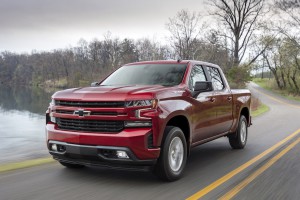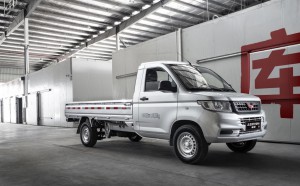General Motors posted earnings for the second quarter that were basically flat as rising incentives and lower prices on its pickup trucks took a bite out of the company’s profits.
GM’s income from continuing operations of $2.4 billion, down $0.1 billion, compared to the second quarter of 2017 due to a driven primarily by the decline pricing and trim mix for the company’s the current-generation full-size pickup truck models, which is due to be replaced next year, and increased commodity costs.
The decline in the profitability of the company’s pick-up truck business was partially offset by improved performance in GM Financial and China.
Earnings before interest and taxes was $3.2 billion, down $.5 billion, compared to the second quarter in the second quarter of 2017 as incentives increased by on average of $600 per vehicle.
(PSA makes Opel profitable a year after buying it from GM. Click Here for the story.)
Diluted earnings per share dropped by 8 cents to $1.81 per share.
GM’s net revenue was $36.8 billion, down $200 million compared with the second quarter of 2017, resulting from pricing and trim mix on current generation full-size pickup truck models and the timing of fleet sales in GM North America, partially offset by continued growth at GM Financial.
The second quarter results from GM also reflected profitability in all core operating segments and the second consecutive quarter of records for China and GM Financial. Results included the unfavorable impact of rising commodity costs, and foreign currency devaluations in South America.
GM International EBIT-adjusted of $100 million, includes record equity income in China of $600 million, partially offset by unfavorable foreign exchange impact in South America.
GM Cruise EBIT-adjusted loss of $200 million was on plan and reflected continued spending on autonomous as the company moves to commercialization.
GM Financial earnings before taxes was $500 million, another record, as earning assets grew 12% to $90.4 billion, supporting expected long-term earnings growth.
(Click Here for more about Maven allowing GM vehicle owners to earn a profit.)
The significant increases in commodity costs and unfavorable foreign exchange impact of the Argentine peso and Brazilian real have negatively affected business expectations. The company expects these headwinds to continue through 2018.
The significant increases in commodity costs and unfavorable foreign exchange impact of the Argentine peso and Brazilian real have negatively affected business expectations. The company expects these headwinds to continue through 2018.
CFO Chuck Stevens estimated that rising commodity costs have cost GM approximately $1 billion this year. Rising steel prices have been a key factor in the jump in commodity prices, he said.
With the threat of tariffs hanging over the industry, GM CEO Mary Barra said she finds she devotes more of her time to trade issues. “With tariffs there is an almost infinite range of things that could happen,” said Barra, who declined to speculate on the outcome of the ongoing debate on trade that has been ignited by the Trump administration.
However, she made it clear that she was very concerned about the North American Free Trade Agreement, which plays a large role in GM operations. “We think it’s important to modernize NAFTA,” she said.
Fuel-economy and emissions rules are another major issue facing the industry, she acknowledged.
(To see how Detroit automakers will be hurt if Trump cuts import tariffs, Click Here.)
“What we ultimately would like is one national standard. that comprehends the new technology we’re putting in place. At the same time, however, Barra indicated that GM does not want a national standard that would wind up penalizing companies, such as GM, that have made major investments in electric-vehicle technology.



